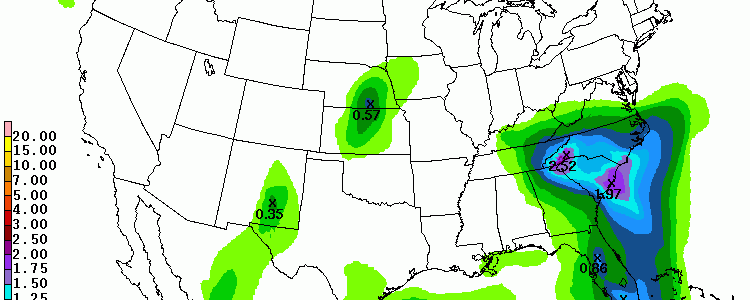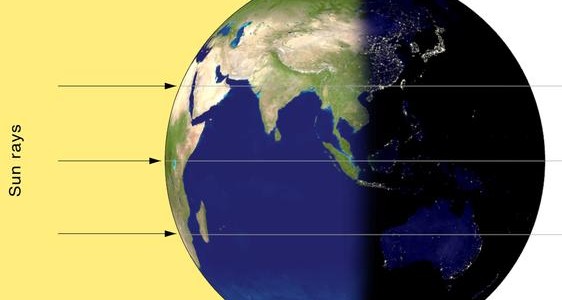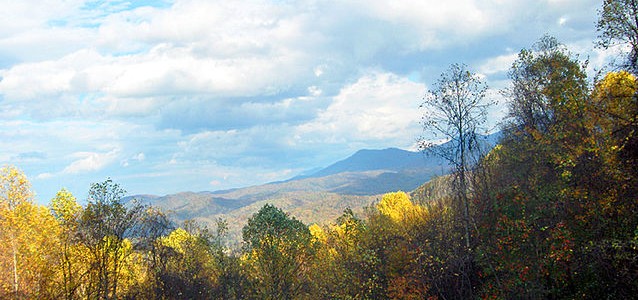-

Hurricane specialists have noted that this has been one of the quietest hurricane seasons in the Western Atlantic since records began. You have to go back to 1914 to find a year with so few hurricanes in that region (through September 22). A number of news articles have been written about this hurricane “drought”, including this one…
-

After the next week, which should have a couple of episodes of rain, most of the mid-range models are suggesting a return to drier than normal conditions which should last through most of October. This will be the key time to harvest hay and crops that require dry conditions. By the end of October, most…
Posted in: Climate outlooks -

The forecasts for rainfall for Thursday night into Friday put parts of northeast Georgia and most of South Carolina into the area of potential heavy precipitation. One to three inches are possible as a low moves through the area from the Gulf of Mexico. If you have been curing hay due to the recent dry…
-

Occasionally I’ve been asked what is the difference between astronomical seasons and meteorological seasons. Deke Arndt of the National Centers for Environmental Information has a nice simple write-up that explains the difference at https://www.ncdc.noaa.gov/news/meteorological-versus-astronomical-seasons. EarthSky also has a good description of what the autumnal equinox is at https://earthsky.org/astronomy-essentials/everything-you-need-to-know-september-equinox.
-

Since today is the first day of fall, the Southeast Regional Climate Center has provided a page with links to foliage reports across the area and the country. You can visit it at https://www.sercc.com/foliage.
-

September 23 marks the autumnal equinox, which means the official start of astronomical fall (remember, climatological fall started on September 1). The official time of the equinox is 4:20 AM Eastern Daylight Time. EarthSky had an article this week discussing why day and night are not equal on the day of the equinox which you might find interesting.
-

The Southeast Regional Climate Hub has produced a new comprehensive document describing the Southeast’s vulnerability to changing climate and methods for adapting to and mitigating for the effects of those likely changes. It includes impacts on crops, livestock, and forests across the region. You can read the document at https://climatehubs.oce.usda.gov/sites/default/files/Southeast%20Vulnerability%20Assessment%20Final.pdf.